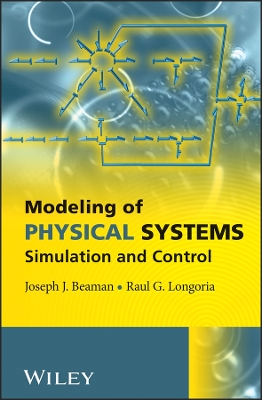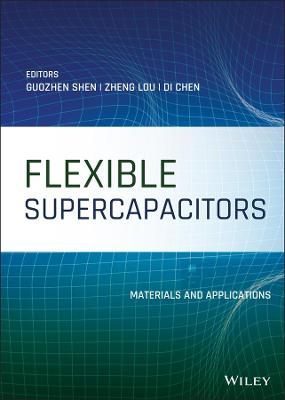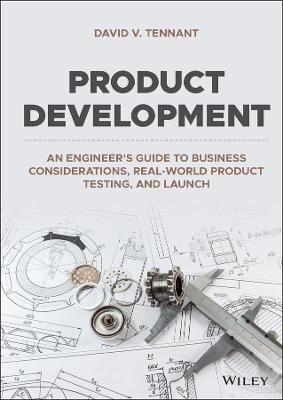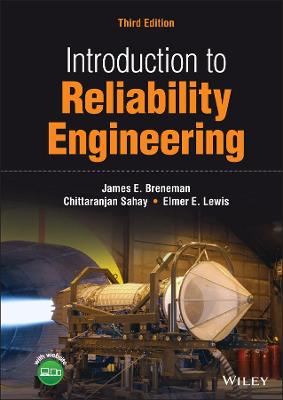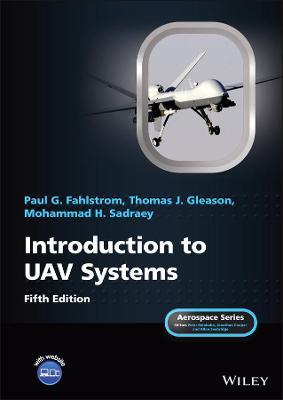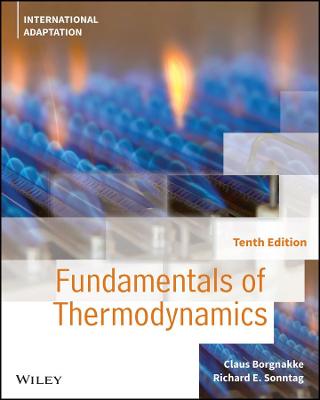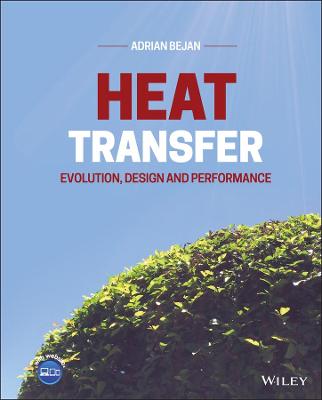Nanosatellites
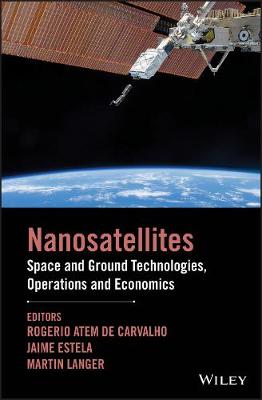 -15%
portes grátis
-15%
portes grátis
Nanosatellites
Space and Ground Technologies, Operations and Economics
Langer, Martin; Atem de Carvalho, Rogerio; Estela, Jaime
John Wiley & Sons Inc
04/2020
712
Dura
Inglês
9781119042037
15 a 20 dias
1408
Foreword: Nanosatellite Space Experiment xxix
Introduction by the Editors xxxv
1 I-1 A Brief History of Nanosatellites 1
Siegfried W. Janson
1.1 Introduction 1
1.2 Historical Nanosatellite Launch Rates 1
1.3 The First Nanosatellites 3
1.4 The Large Space Era 8
1.5 The New Space Era 12
1.6 Summary 23
References 24
2 I-2a On-board Computer and Data Handling 31
Jaime Estela and Sergio Montenegro
2.1 Introduction 31
2.2 History 31
2.3 Special Requirements for Space Applications 34
2.4 Hardware 35
2.5 Design 41
References 49
3 I-2b Operational Systems 51
Lucas Ramos Hissa and Rogerio Atem de Carvalho
3.1 Introduction 51
3.2 RTOS Overview 51
3.3 RTOS on On-board Computers (OBCs): Requirements for a Small Satellite 52
3.4 Example Projects 55
3.5 Conclusions 56
References 59
4 I-2c Attitude Control and Determination 61
Willem H. Steyn and Vaios J. Lappas
4.1 Introduction 61
4.2 ADCS Fundamentals 61
4.3 ADCS Requirements and Stabilization Methods 62
4.4 ADCS Background Theory 65
4.5 Attitude and Angular Rate Determination 66
4.6 Attitude and Angular Rate Controllers 72
4.7 ADCS Sensor and Actuator Hardware 75
References 83
5 I-2d Propulsion Systems 85
Flavia Tata Nardini, Michele Coletti, Alexander Reissner, and David Krejci
5.1 Introduction 85
5.2 Propulsion Elements 86
5.3 Key Elements in the Development of Micropropulsion Systems 87
5.4 Propulsion System Technologies 90
5.5 Mission Elements 98
5.6 Survey of All Existing Systems 101
5.7 Future Prospect 113
References 113
6 I-2e Communications 115
Nicolas Appel, Sebastian Rueckerl, Martin Langer, and Rolf-Dieter Klein
6.1 Introduction 115
6.2 Regulatory Considerations 116
6.3 Satellite Link Characteristics 117
6.4 Channel Coding 123
6.5 Data Link Layer 126
6.6 Hardware 128
6.7 Testing 138
References 140
7 I-2f Structural Subsystem 143
Kenan Y. Sanl??tuerk, Murat Sueer, and A. Ruestem Aslan
7.1 Definition and Tasks 143
7.2 Existing State-of-the-Art Structures for CubeSats 145
7.3 Materials and Thermal Considerations for Structural Design 150
7.4 Design Parameters and Tools 152
7.5 Design Challenges 162
7.6 Future Prospects 163
References 164
8 I-2g Power Systems 167
Marcos Compadre, Ausias Garrigos, and Andrew Strain
8.1 Introduction 167
8.2 Power Source: Photovoltaic Solar Cells and Solar Array 170
8.3 Energy Storage: Lithium-ion Batteries 172
8.4 SA-battery Power Conditioning: DET and MPPT 175
8.5 Battery Charging Control Loops 178
8.6 Bus Power Conditioning and Distribution: Load Converters and Distribution Switches 179
8.7 Flight Switch Subsystem 183
8.8 DC/DC Converters 183
8.9 Power System Sizing: Power Budget, Solar Array, and Battery Selection 187
8.10 Conclusions 191
References 191
9 I-2h Thermal Design, Analysis, and Test 193
Philipp Reiss, Matthias Killian, and Philipp Hager
9.1 Introduction 193
9.2 Typical Thermal Loads 194
9.3 Active and Passive Designs 200
9.4 Design Approach and Tools 204
9.5 Thermal Tests 208
References 212
10 I-2i Systems Engineering and Quality Assessment 215
Lucas Lopes Costa, Geilson Loureiro, Eduardo Escobar Buerger, and Franciele Carlesso
10.1 Introduction 215
10.2 Systems Engineering Definition and Process 216
10.3 Space Project Management: Role of Systems Engineers 222
10.4 ECSS and Other Standards 225
10.5 Document, Risk Control, and Resources 228
10.6 Changing Trends in SE and Quality Assessment for Nanosatellites 233
References 233
11 I-2j Integration and Testing 235
Eduardo Escobar Buerger, Geilson Loureiro, and Lucas Lopes Costa
11.1 Introduction 235
11.2 Overall Tasks 236
11.3 Typical Flow 241
11.4 Test Philosophies 242
11.5 Typical System Integration Process 244
11.6 Typical Test Parameters and Facilities 244
11.7 Burden of Integration and Testing 245
11.8 Changing Trends in Nanosatellite Testing 249
References 250
12 I-3a Scientific Payloads 251
Anna Gregorio
12.1 Introduction 251
12.2 Categorization 252
12.3 Imagers 254
12.4 X-ray Detectors 256
12.5 Spectrometers 259
12.6 Photometers 262
12.7 GNSS Receivers 265
12.8 Microbolometers 267
12.9 Radiometers 269
12.10 Radar Systems 270
12.11 Particle Detectors 274
12.12 PlasmaWave Analyzers 277
12.13 Biological Detectors 280
12.14 Solar Sails 283
12.15 Conclusions 283
References 283
13 I-3b In-orbit Technology Demonstration 291
Jaime Estela
13.1 Introduction 291
13.2 Activities of Space Agencies 292
13.3 Nanosatellites 295
13.4 Microsatellites 298
13.5 ISS 301
References 306
14 I-3c Nanosatellites as Educational Projects 309
Merlin F. Barschke
14.1 Introduction 309
14.2 Satellites and Project-based Learning 309
14.3 University Satellite Programs 312
14.4 Outcome and Success Criteria 316
14.5 Teams and Organizational Structure 318
14.6 Challenges and Practical Experiences 318
14.7 From Pure Education to Powerful Research Tools 321
References 321
15 I-3d Formations of Small Satellites 327
Klaus Schilling
15.1 Introduction 327
15.2 Constellations and Formations 327
15.3 Orbit Dynamics 328
15.4 Satellite Configurations 331
15.5 Relevant Specific Small Satellite Technologies to Enable Formations 332
15.6 Application Examples 334
15.7 Test Environment for Multisatellite Systems 336
15.8 Conclusions for Distributed Nanosatellite Systems 337
Acknowledgments 338
References 338
16 I-3e Precise, Autonomous Formation Flight at Low Cost 341
Niels Roth, Ben Risi, Robert E. Zee, Grant Bonin, Scott Armitage, and Josh Newman
16.1 Introduction 341
16.2 Mission Overview 342
16.3 System Overview 343
16.4 Launch and Early Operations 350
16.5 Formation Control Results 353
16.6 Conclusion 360
Acknowledgments 360
References 360
17 I-4a Launch Vehicles-Challenges and Solutions 363
Kaitlyn Kelley
17.1 Introduction 363
17.2 Past Nanosatellite Launches 365
17.3 Launch Vehicles Commonly Used by Nanosatellites 367
17.4 Overview of a Typical Launch Campaign 368
17.5 Launch Demand 371
17.6 Future Launch Concepts 372
References 374
18 I-4b Deployment Systems 375
A. Ruestem Aslan, Cesar Bernal, and Jordi Puig-Suari
18.1 Introduction 375
18.2 Definition and Tasks 375
18.3 Basics of Deployment Systems 376
18.4 State of the Art 377
18.5 Future Prospects 395
Acknowledgments 396
References 396
19 I-4c Mission Operations 399
Chantal Cappelletti
19.1 Introduction 399
19.2 Organization of Mission Operations 400
19.3 Goals and Functions of Mission Operations 401
19.4 Input and Output of Mission Operations 404
19.5 MOP 406
19.6 Costs and Operations 409
References 414
Further Reading 415
20 I-5 Mission Examples 417
Kelly Antonini, Nicolo Carletti, Kevin Cuevas, Matteo Emanuelli, Per Koch, Laura Leon Perez, and Daniel Smith
20.1 Introduction 417
20.2 Mission Types 418
20.3 Mission Examples 420
20.4 Constellations 433
20.5 Perspective 437
References 438
21 II-1 Ground Segment 441
Fernando Aguado Agelet and Alberto Gonzalez Muino
21.1 Introduction 441
21.2 Ground Segment Functionalities 441
21.3 Ground Segment Architecture 442
21.4 Ground Station Elements 444
21.5 Ground Segment Software 449
21.6 Ground Segment Operation 451
21.7 Future Prospects 452
References 455
22 II-2 Ground Station Networks 457
Lucas Rodrigues Amaduro and Rogerio Atem de Carvalho
22.1 Introduction 457
22.2 Technological Challenges 457
22.3 Visibility Clash Problems of Stations and Satellites 458
22.4 The Distributed Ground Station Network 459
22.5 Infrastructure 459
22.6 Planning and Scheduling 460
22.7 Generic Software Architecture 460
22.8 Example Networks 462
22.9 Traditional Ground Station Approach 462
22.10 Heterogeneous Ground Station Approach 464
22.11 Homogeneous Ground Station Approach 466
22.12 Conclusions 469
References 469
23 II-3 Ground-based Satellite Tracking 471
Enrico Stoll, Juergen Letschnik, and Christopher Kebschull
23.1 Introduction 471
23.2 Orbital Element Sets 472
23.3 Tracklet Generation from Ground Measurements 475
23.4 Tracking CubeSats with Ground Stations 481
23.5 Orbit Propagation 485
23.6 Principle of Operations of Ground Stations 487
23.7 Summary 492
References 493
24 II-4a AMSAT 495
Andrew Barron (ZL3DW)
24.1 Introduction 495
24.2 Project OSCAR 496
24.3 AMSAT Satellite Designations 499
24.4 Other Notable AMSAT and OSCAR Satellites 500
24.5 The Development of CubeSats 503
24.6 FUNcube Satellites 504
24.7 Fox Satellites 505
24.8 GOLF Satellites 505
24.9 The IARU and ITU Resolution 659 506
References 507
24 II-4b New Radio Technologies 508
Andrew Barron (ZL3DW)
24.10 Introduction 508
24.11 SDR Space Segment 509
24.12 SDR Ground Segment 510
24.13 Modern Transmitter Design 511
Reference 513
25 III-1a Cost Breakdown for the Development of Nanosatellites 515
Katharine Brumbaugh Gamble
25.1 Introduction 515
25.2 Recurring Costs 517
25.3 Nonrecurring Costs 521
25.4 Satellite Cost-estimating Models 523
25.5 Risk Estimation and Reduction 528
25.6 Conclusions 530
References 530
26 III-1b Launch Costs 533
Merlin F. Barschke
26.1 Introduction 533
26.2 Launching Nanosatellites 533
26.3 Launch Sites 539
26.4 Launch Milestones 539
26.5 Launch Cost 540
References 541
27 III-2a Policies and Regulations in Europe 545
Neta Palkovitz
27.1 Introduction 545
27.2 International Space Law 545
27.3 National Laws and Practices in EU Member States 550
27.4 Future Regulation and Prospects 554
References 555
28 III-2b Policies and Regulations in North America 557
Mike Miller and Kirk Woellert
28.1 Introduction 557
28.2 Governing Treaties and Laws 558
28.3 Orbital Debris Mitigation 561
28.4 Space Traffic Management 563
28.5 Licensing of Radio Transmission from Space 566
28.6 Licensing for Remote Sensing Activities from Space 570
28.7 Export Control Laws 571
28.8 Conclusion 575
References 577
29 III-2c International Organizations and International Cooperation 583
Jean-Francois Mayence
29.1 Introduction 583
29.2 The United Nations and Affiliated Organizations 584
29.3 International Telecommunications Union 589
29.4 Other United Nations Agencies and Bodies 590
29.5 Non-UN Organizations 593
29.6 Main Non-European Spacefaring Nations 597
29.7 Conclusions 600
References 601
30 III-3a Economy of Small Satellites 603
Richard Joye
30.1 Introduction 603
30.2 Rethinking the Value Chain 603
30.3 A Hybrid Small Satellite Value Chain 604
30.4 Evolution, Not Revolution? 611
30.5 The Economics at Play 612
30.6 Satellite Manufacturers 612
30.7 Launch Service Providers 614
30.8 Satellite Operators 615
30.9 Satellite Servicing Providers 616
30.10 Data and Solution Providers 616
30.11 A Shift Toward New Models 617
References 618
Further Reading 618
31 III-3b Economics and the Future 621
Richard Joye
31.1 Introduction 621
31.2 Themes Shaping the Space Industry 622
31.3 Megatrends 624
31.4 Conclusion: The Space Industry is in Mutation 632
Further Reading 632
32 III-3c Networks of Nanosatellites 635
Richard Joye
32.1 Introduction 635
32.2 Why Networks? 635
32.3 Opportunities for Networks of Nanosatellites 641
32.4 Challenges and Issues 646
Reference 648
Further Reading 648
List of Existing and Upcoming Networks of Satellites - January 2018, Updated March 2019 649
Index 663
Foreword: Nanosatellite Space Experiment xxix
Introduction by the Editors xxxv
1 I-1 A Brief History of Nanosatellites 1
Siegfried W. Janson
1.1 Introduction 1
1.2 Historical Nanosatellite Launch Rates 1
1.3 The First Nanosatellites 3
1.4 The Large Space Era 8
1.5 The New Space Era 12
1.6 Summary 23
References 24
2 I-2a On-board Computer and Data Handling 31
Jaime Estela and Sergio Montenegro
2.1 Introduction 31
2.2 History 31
2.3 Special Requirements for Space Applications 34
2.4 Hardware 35
2.5 Design 41
References 49
3 I-2b Operational Systems 51
Lucas Ramos Hissa and Rogerio Atem de Carvalho
3.1 Introduction 51
3.2 RTOS Overview 51
3.3 RTOS on On-board Computers (OBCs): Requirements for a Small Satellite 52
3.4 Example Projects 55
3.5 Conclusions 56
References 59
4 I-2c Attitude Control and Determination 61
Willem H. Steyn and Vaios J. Lappas
4.1 Introduction 61
4.2 ADCS Fundamentals 61
4.3 ADCS Requirements and Stabilization Methods 62
4.4 ADCS Background Theory 65
4.5 Attitude and Angular Rate Determination 66
4.6 Attitude and Angular Rate Controllers 72
4.7 ADCS Sensor and Actuator Hardware 75
References 83
5 I-2d Propulsion Systems 85
Flavia Tata Nardini, Michele Coletti, Alexander Reissner, and David Krejci
5.1 Introduction 85
5.2 Propulsion Elements 86
5.3 Key Elements in the Development of Micropropulsion Systems 87
5.4 Propulsion System Technologies 90
5.5 Mission Elements 98
5.6 Survey of All Existing Systems 101
5.7 Future Prospect 113
References 113
6 I-2e Communications 115
Nicolas Appel, Sebastian Rueckerl, Martin Langer, and Rolf-Dieter Klein
6.1 Introduction 115
6.2 Regulatory Considerations 116
6.3 Satellite Link Characteristics 117
6.4 Channel Coding 123
6.5 Data Link Layer 126
6.6 Hardware 128
6.7 Testing 138
References 140
7 I-2f Structural Subsystem 143
Kenan Y. Sanl??tuerk, Murat Sueer, and A. Ruestem Aslan
7.1 Definition and Tasks 143
7.2 Existing State-of-the-Art Structures for CubeSats 145
7.3 Materials and Thermal Considerations for Structural Design 150
7.4 Design Parameters and Tools 152
7.5 Design Challenges 162
7.6 Future Prospects 163
References 164
8 I-2g Power Systems 167
Marcos Compadre, Ausias Garrigos, and Andrew Strain
8.1 Introduction 167
8.2 Power Source: Photovoltaic Solar Cells and Solar Array 170
8.3 Energy Storage: Lithium-ion Batteries 172
8.4 SA-battery Power Conditioning: DET and MPPT 175
8.5 Battery Charging Control Loops 178
8.6 Bus Power Conditioning and Distribution: Load Converters and Distribution Switches 179
8.7 Flight Switch Subsystem 183
8.8 DC/DC Converters 183
8.9 Power System Sizing: Power Budget, Solar Array, and Battery Selection 187
8.10 Conclusions 191
References 191
9 I-2h Thermal Design, Analysis, and Test 193
Philipp Reiss, Matthias Killian, and Philipp Hager
9.1 Introduction 193
9.2 Typical Thermal Loads 194
9.3 Active and Passive Designs 200
9.4 Design Approach and Tools 204
9.5 Thermal Tests 208
References 212
10 I-2i Systems Engineering and Quality Assessment 215
Lucas Lopes Costa, Geilson Loureiro, Eduardo Escobar Buerger, and Franciele Carlesso
10.1 Introduction 215
10.2 Systems Engineering Definition and Process 216
10.3 Space Project Management: Role of Systems Engineers 222
10.4 ECSS and Other Standards 225
10.5 Document, Risk Control, and Resources 228
10.6 Changing Trends in SE and Quality Assessment for Nanosatellites 233
References 233
11 I-2j Integration and Testing 235
Eduardo Escobar Buerger, Geilson Loureiro, and Lucas Lopes Costa
11.1 Introduction 235
11.2 Overall Tasks 236
11.3 Typical Flow 241
11.4 Test Philosophies 242
11.5 Typical System Integration Process 244
11.6 Typical Test Parameters and Facilities 244
11.7 Burden of Integration and Testing 245
11.8 Changing Trends in Nanosatellite Testing 249
References 250
12 I-3a Scientific Payloads 251
Anna Gregorio
12.1 Introduction 251
12.2 Categorization 252
12.3 Imagers 254
12.4 X-ray Detectors 256
12.5 Spectrometers 259
12.6 Photometers 262
12.7 GNSS Receivers 265
12.8 Microbolometers 267
12.9 Radiometers 269
12.10 Radar Systems 270
12.11 Particle Detectors 274
12.12 PlasmaWave Analyzers 277
12.13 Biological Detectors 280
12.14 Solar Sails 283
12.15 Conclusions 283
References 283
13 I-3b In-orbit Technology Demonstration 291
Jaime Estela
13.1 Introduction 291
13.2 Activities of Space Agencies 292
13.3 Nanosatellites 295
13.4 Microsatellites 298
13.5 ISS 301
References 306
14 I-3c Nanosatellites as Educational Projects 309
Merlin F. Barschke
14.1 Introduction 309
14.2 Satellites and Project-based Learning 309
14.3 University Satellite Programs 312
14.4 Outcome and Success Criteria 316
14.5 Teams and Organizational Structure 318
14.6 Challenges and Practical Experiences 318
14.7 From Pure Education to Powerful Research Tools 321
References 321
15 I-3d Formations of Small Satellites 327
Klaus Schilling
15.1 Introduction 327
15.2 Constellations and Formations 327
15.3 Orbit Dynamics 328
15.4 Satellite Configurations 331
15.5 Relevant Specific Small Satellite Technologies to Enable Formations 332
15.6 Application Examples 334
15.7 Test Environment for Multisatellite Systems 336
15.8 Conclusions for Distributed Nanosatellite Systems 337
Acknowledgments 338
References 338
16 I-3e Precise, Autonomous Formation Flight at Low Cost 341
Niels Roth, Ben Risi, Robert E. Zee, Grant Bonin, Scott Armitage, and Josh Newman
16.1 Introduction 341
16.2 Mission Overview 342
16.3 System Overview 343
16.4 Launch and Early Operations 350
16.5 Formation Control Results 353
16.6 Conclusion 360
Acknowledgments 360
References 360
17 I-4a Launch Vehicles-Challenges and Solutions 363
Kaitlyn Kelley
17.1 Introduction 363
17.2 Past Nanosatellite Launches 365
17.3 Launch Vehicles Commonly Used by Nanosatellites 367
17.4 Overview of a Typical Launch Campaign 368
17.5 Launch Demand 371
17.6 Future Launch Concepts 372
References 374
18 I-4b Deployment Systems 375
A. Ruestem Aslan, Cesar Bernal, and Jordi Puig-Suari
18.1 Introduction 375
18.2 Definition and Tasks 375
18.3 Basics of Deployment Systems 376
18.4 State of the Art 377
18.5 Future Prospects 395
Acknowledgments 396
References 396
19 I-4c Mission Operations 399
Chantal Cappelletti
19.1 Introduction 399
19.2 Organization of Mission Operations 400
19.3 Goals and Functions of Mission Operations 401
19.4 Input and Output of Mission Operations 404
19.5 MOP 406
19.6 Costs and Operations 409
References 414
Further Reading 415
20 I-5 Mission Examples 417
Kelly Antonini, Nicolo Carletti, Kevin Cuevas, Matteo Emanuelli, Per Koch, Laura Leon Perez, and Daniel Smith
20.1 Introduction 417
20.2 Mission Types 418
20.3 Mission Examples 420
20.4 Constellations 433
20.5 Perspective 437
References 438
21 II-1 Ground Segment 441
Fernando Aguado Agelet and Alberto Gonzalez Muino
21.1 Introduction 441
21.2 Ground Segment Functionalities 441
21.3 Ground Segment Architecture 442
21.4 Ground Station Elements 444
21.5 Ground Segment Software 449
21.6 Ground Segment Operation 451
21.7 Future Prospects 452
References 455
22 II-2 Ground Station Networks 457
Lucas Rodrigues Amaduro and Rogerio Atem de Carvalho
22.1 Introduction 457
22.2 Technological Challenges 457
22.3 Visibility Clash Problems of Stations and Satellites 458
22.4 The Distributed Ground Station Network 459
22.5 Infrastructure 459
22.6 Planning and Scheduling 460
22.7 Generic Software Architecture 460
22.8 Example Networks 462
22.9 Traditional Ground Station Approach 462
22.10 Heterogeneous Ground Station Approach 464
22.11 Homogeneous Ground Station Approach 466
22.12 Conclusions 469
References 469
23 II-3 Ground-based Satellite Tracking 471
Enrico Stoll, Juergen Letschnik, and Christopher Kebschull
23.1 Introduction 471
23.2 Orbital Element Sets 472
23.3 Tracklet Generation from Ground Measurements 475
23.4 Tracking CubeSats with Ground Stations 481
23.5 Orbit Propagation 485
23.6 Principle of Operations of Ground Stations 487
23.7 Summary 492
References 493
24 II-4a AMSAT 495
Andrew Barron (ZL3DW)
24.1 Introduction 495
24.2 Project OSCAR 496
24.3 AMSAT Satellite Designations 499
24.4 Other Notable AMSAT and OSCAR Satellites 500
24.5 The Development of CubeSats 503
24.6 FUNcube Satellites 504
24.7 Fox Satellites 505
24.8 GOLF Satellites 505
24.9 The IARU and ITU Resolution 659 506
References 507
24 II-4b New Radio Technologies 508
Andrew Barron (ZL3DW)
24.10 Introduction 508
24.11 SDR Space Segment 509
24.12 SDR Ground Segment 510
24.13 Modern Transmitter Design 511
Reference 513
25 III-1a Cost Breakdown for the Development of Nanosatellites 515
Katharine Brumbaugh Gamble
25.1 Introduction 515
25.2 Recurring Costs 517
25.3 Nonrecurring Costs 521
25.4 Satellite Cost-estimating Models 523
25.5 Risk Estimation and Reduction 528
25.6 Conclusions 530
References 530
26 III-1b Launch Costs 533
Merlin F. Barschke
26.1 Introduction 533
26.2 Launching Nanosatellites 533
26.3 Launch Sites 539
26.4 Launch Milestones 539
26.5 Launch Cost 540
References 541
27 III-2a Policies and Regulations in Europe 545
Neta Palkovitz
27.1 Introduction 545
27.2 International Space Law 545
27.3 National Laws and Practices in EU Member States 550
27.4 Future Regulation and Prospects 554
References 555
28 III-2b Policies and Regulations in North America 557
Mike Miller and Kirk Woellert
28.1 Introduction 557
28.2 Governing Treaties and Laws 558
28.3 Orbital Debris Mitigation 561
28.4 Space Traffic Management 563
28.5 Licensing of Radio Transmission from Space 566
28.6 Licensing for Remote Sensing Activities from Space 570
28.7 Export Control Laws 571
28.8 Conclusion 575
References 577
29 III-2c International Organizations and International Cooperation 583
Jean-Francois Mayence
29.1 Introduction 583
29.2 The United Nations and Affiliated Organizations 584
29.3 International Telecommunications Union 589
29.4 Other United Nations Agencies and Bodies 590
29.5 Non-UN Organizations 593
29.6 Main Non-European Spacefaring Nations 597
29.7 Conclusions 600
References 601
30 III-3a Economy of Small Satellites 603
Richard Joye
30.1 Introduction 603
30.2 Rethinking the Value Chain 603
30.3 A Hybrid Small Satellite Value Chain 604
30.4 Evolution, Not Revolution? 611
30.5 The Economics at Play 612
30.6 Satellite Manufacturers 612
30.7 Launch Service Providers 614
30.8 Satellite Operators 615
30.9 Satellite Servicing Providers 616
30.10 Data and Solution Providers 616
30.11 A Shift Toward New Models 617
References 618
Further Reading 618
31 III-3b Economics and the Future 621
Richard Joye
31.1 Introduction 621
31.2 Themes Shaping the Space Industry 622
31.3 Megatrends 624
31.4 Conclusion: The Space Industry is in Mutation 632
Further Reading 632
32 III-3c Networks of Nanosatellites 635
Richard Joye
32.1 Introduction 635
32.2 Why Networks? 635
32.3 Opportunities for Networks of Nanosatellites 641
32.4 Challenges and Issues 646
Reference 648
Further Reading 648
List of Existing and Upcoming Networks of Satellites - January 2018, Updated March 2019 649
Index 663


